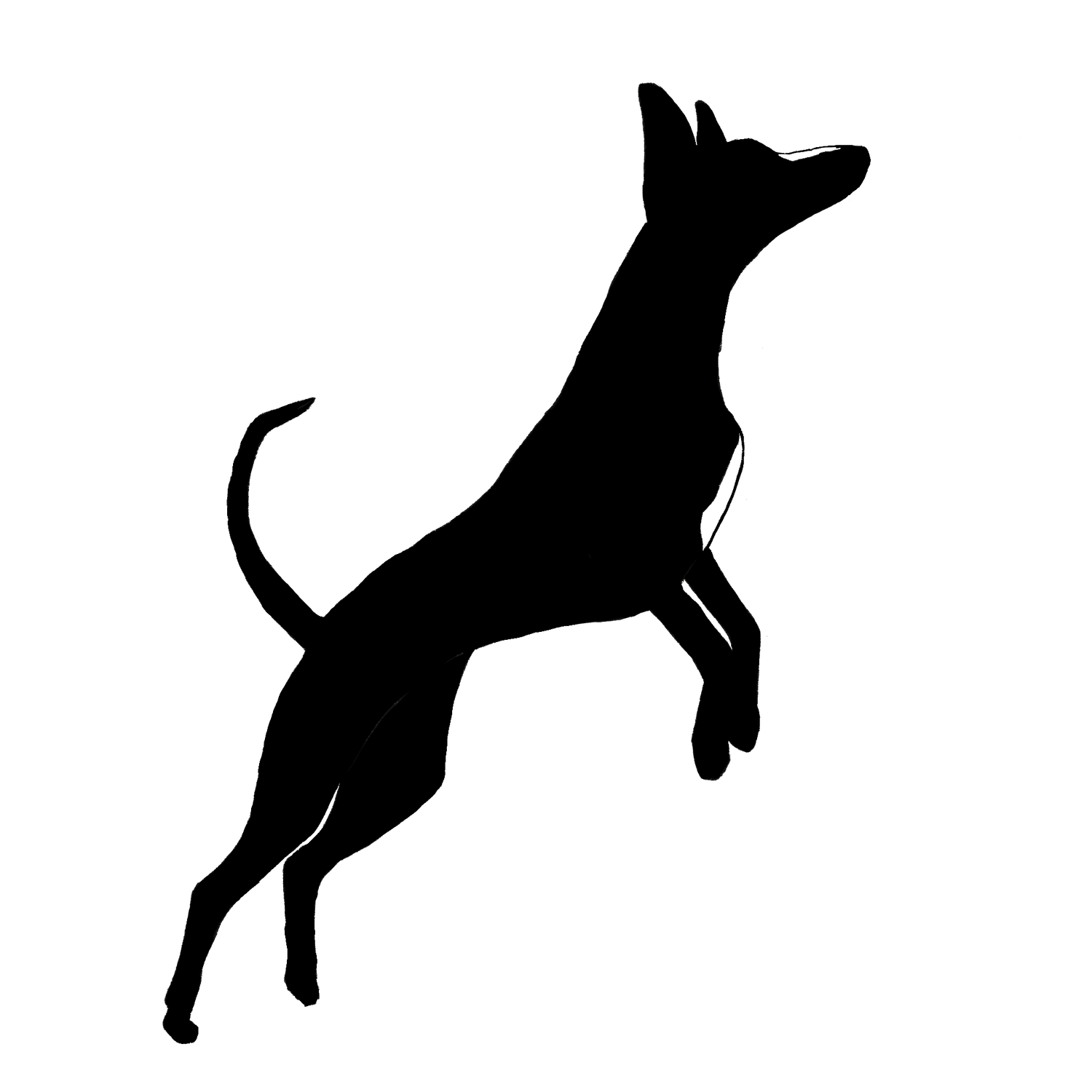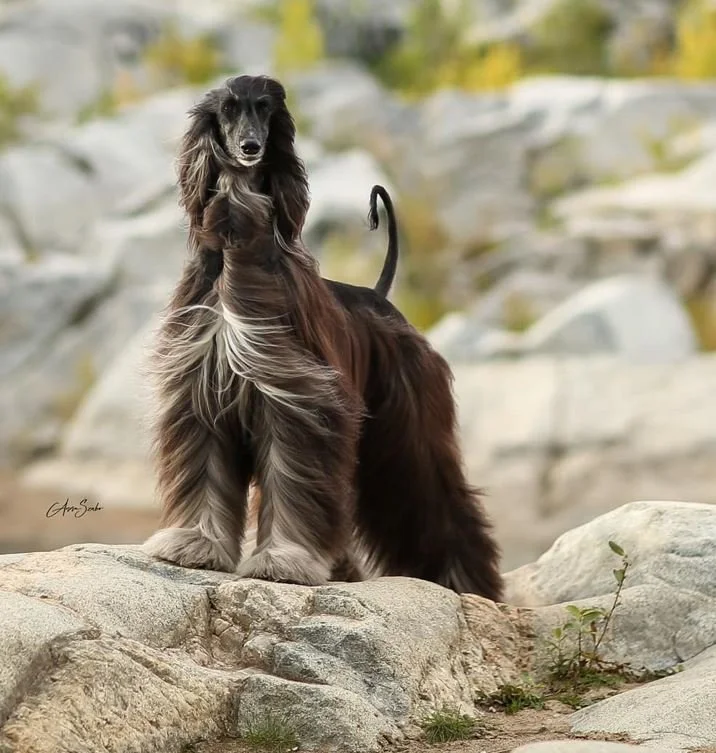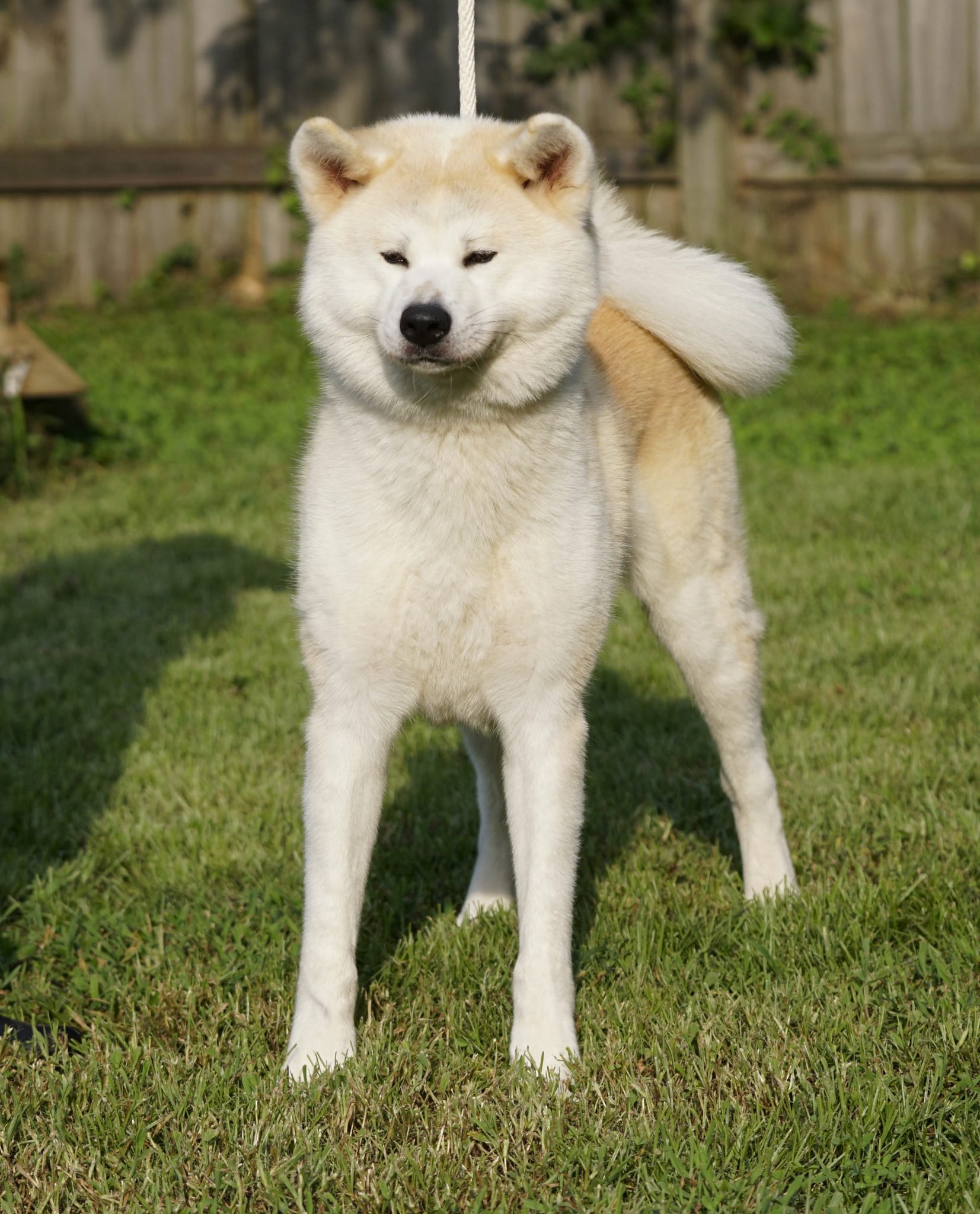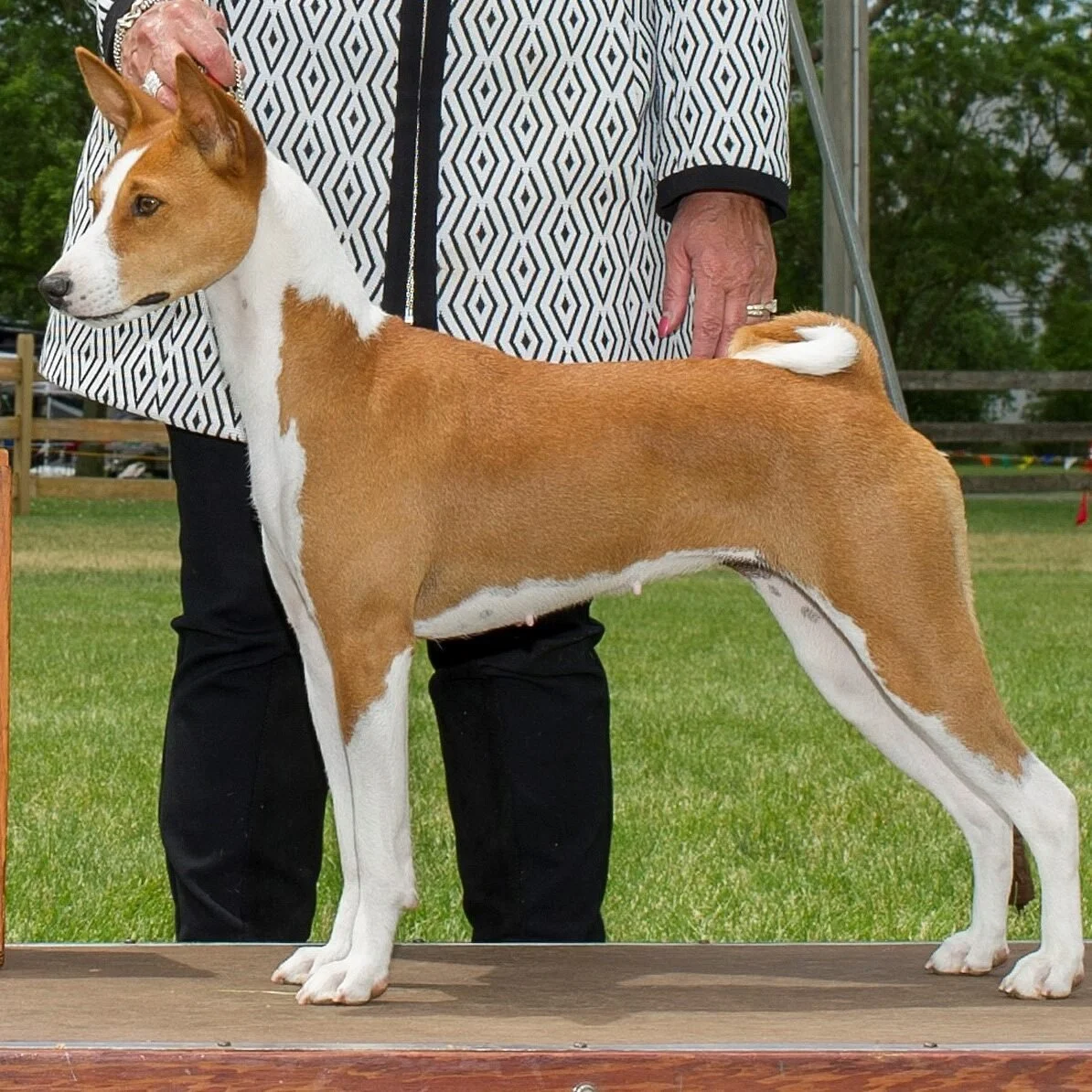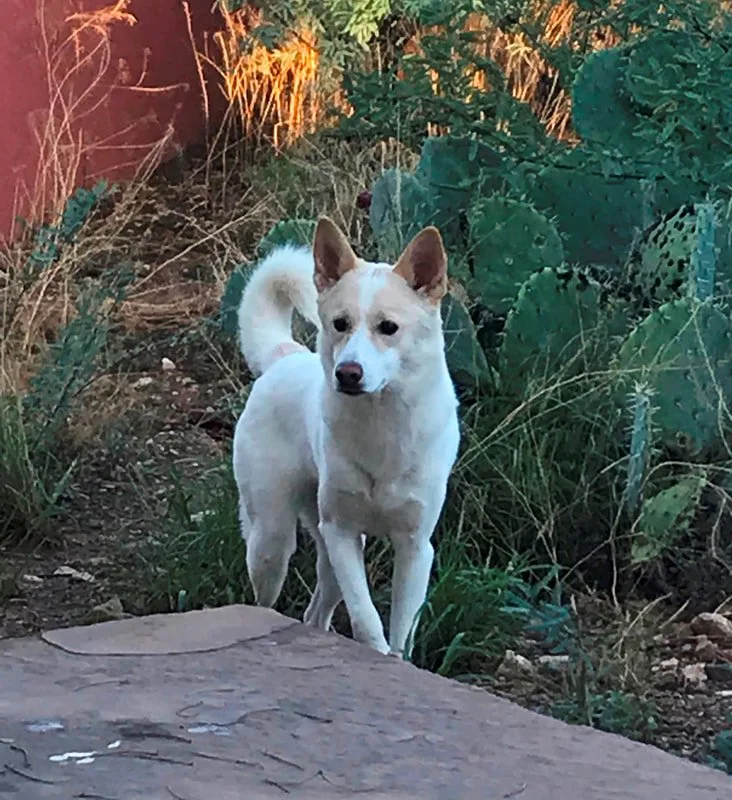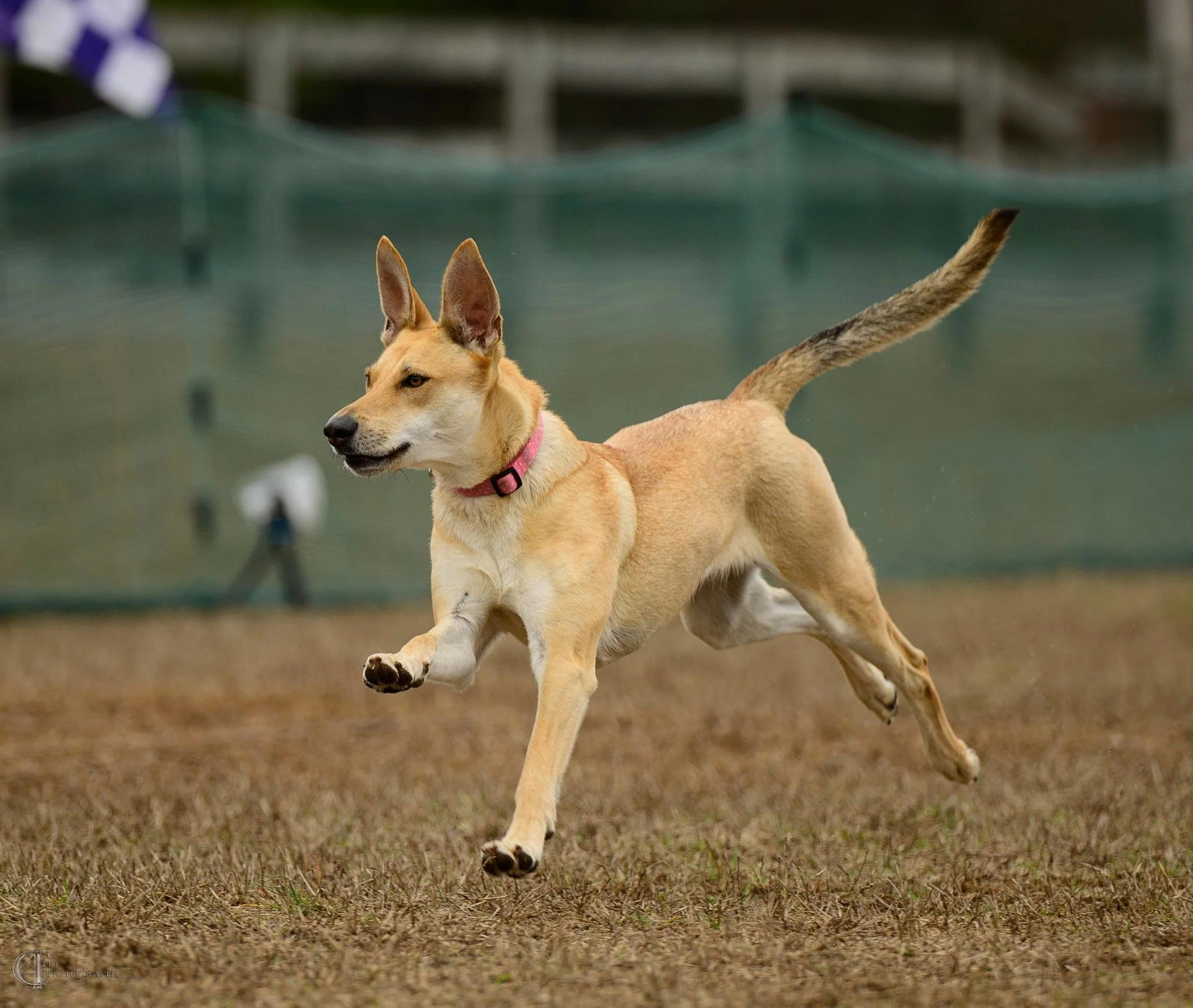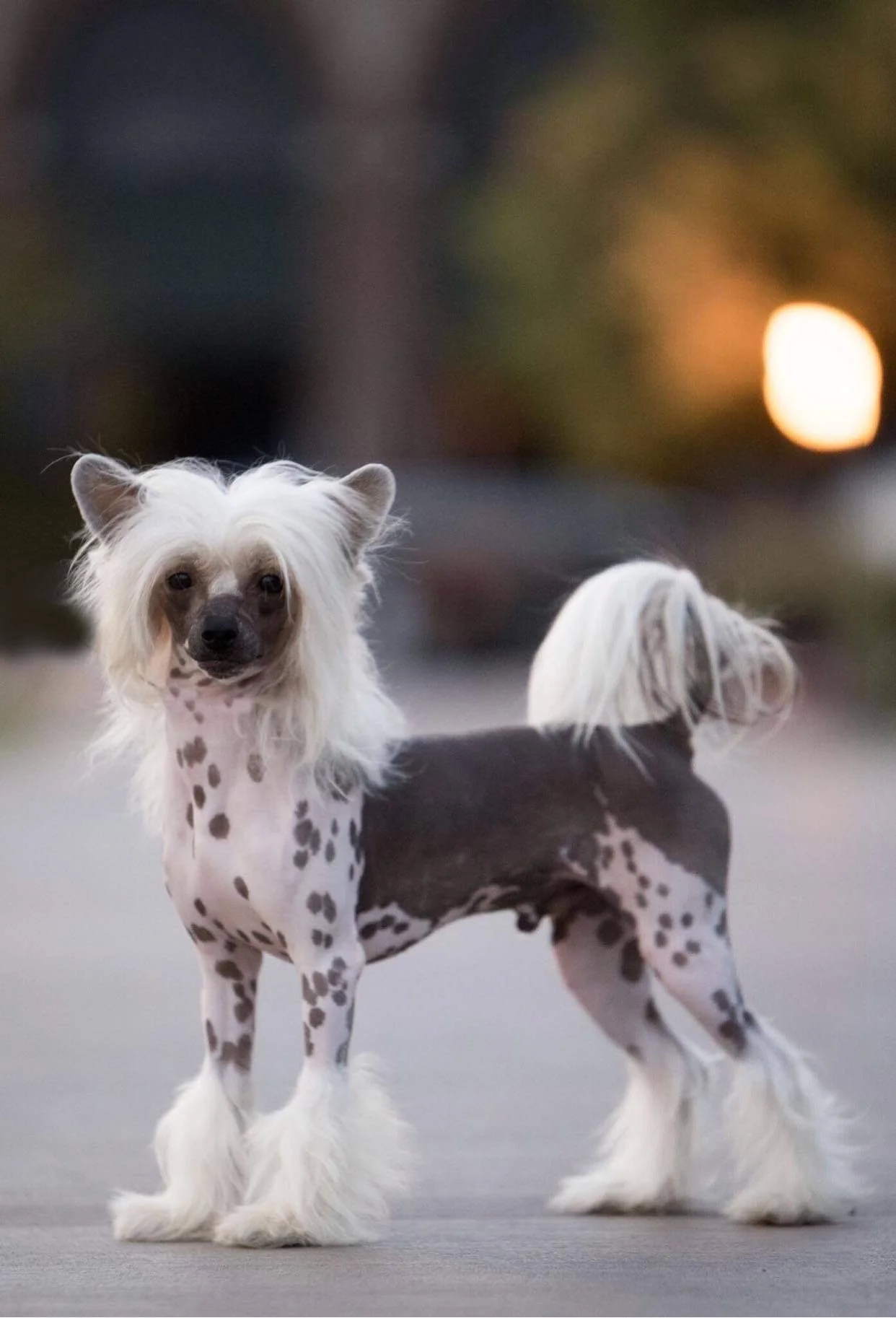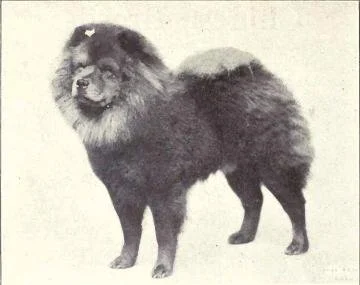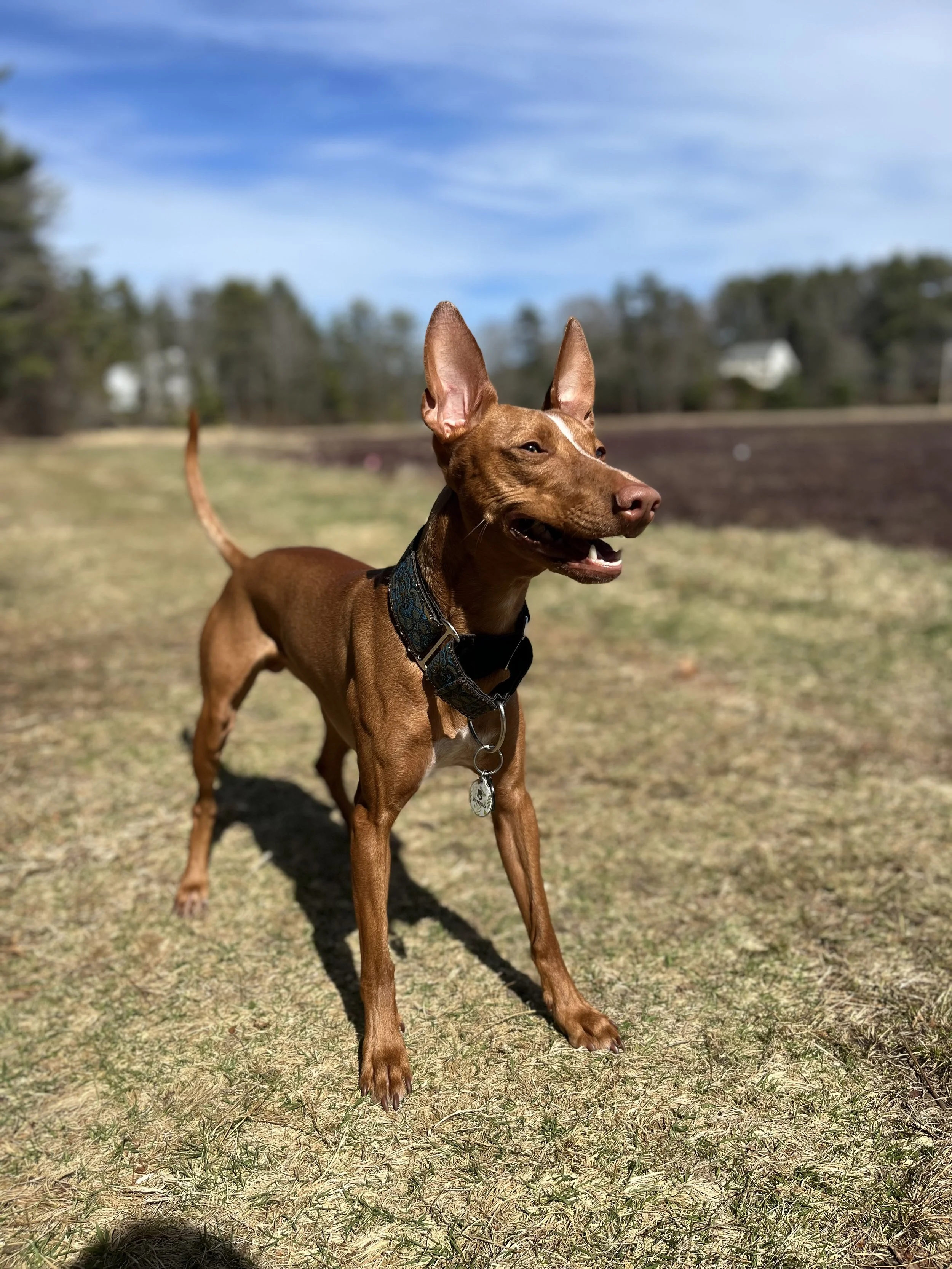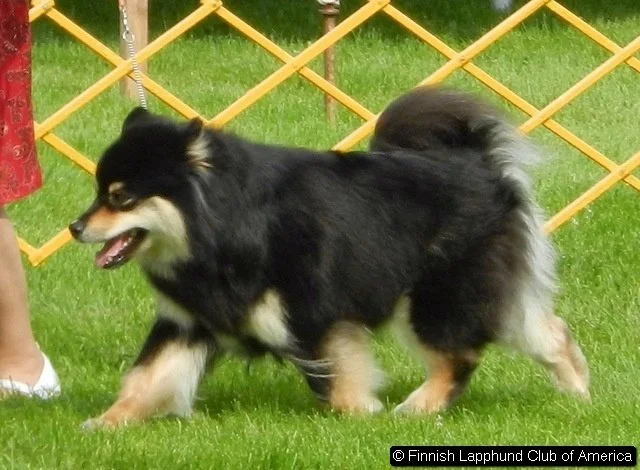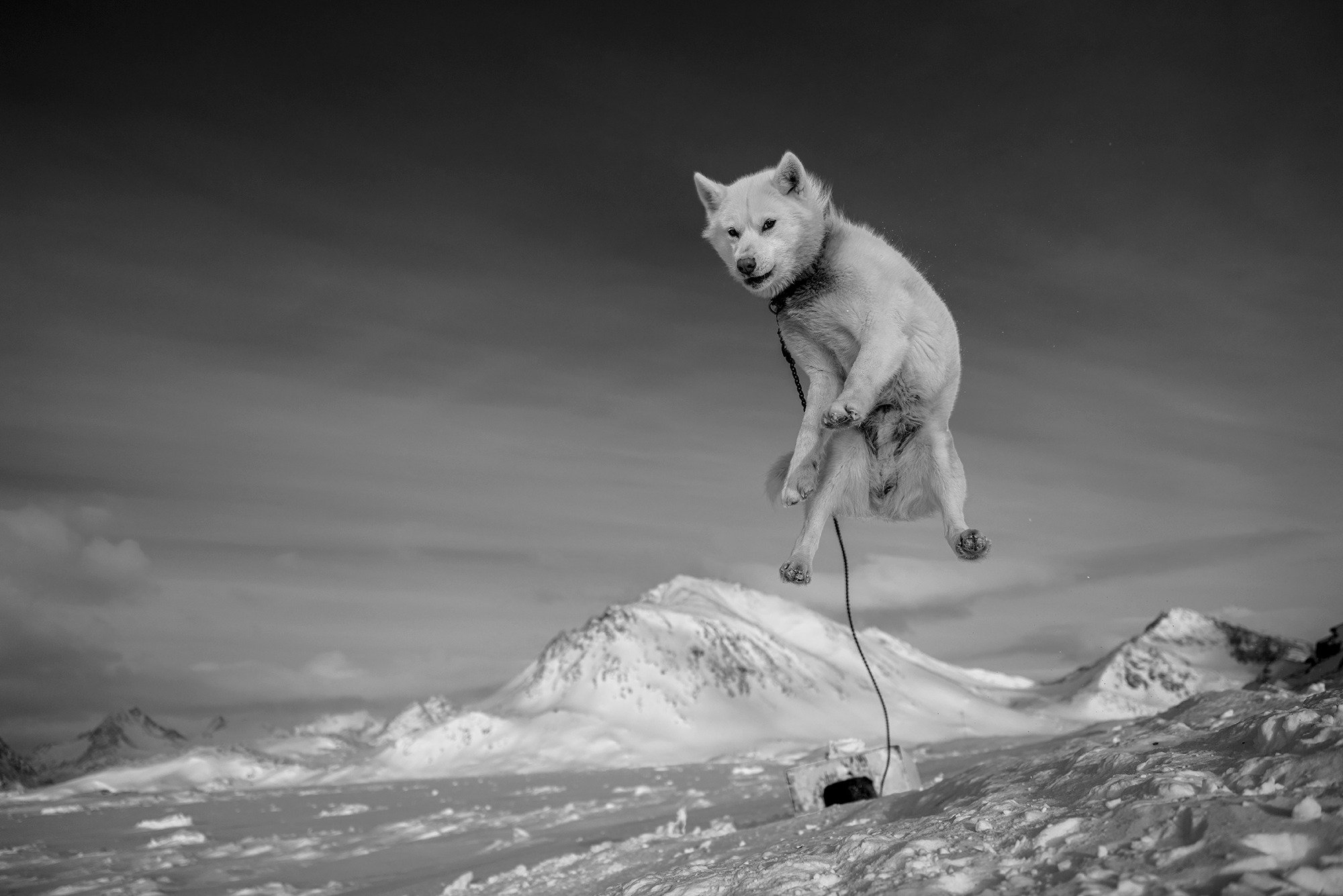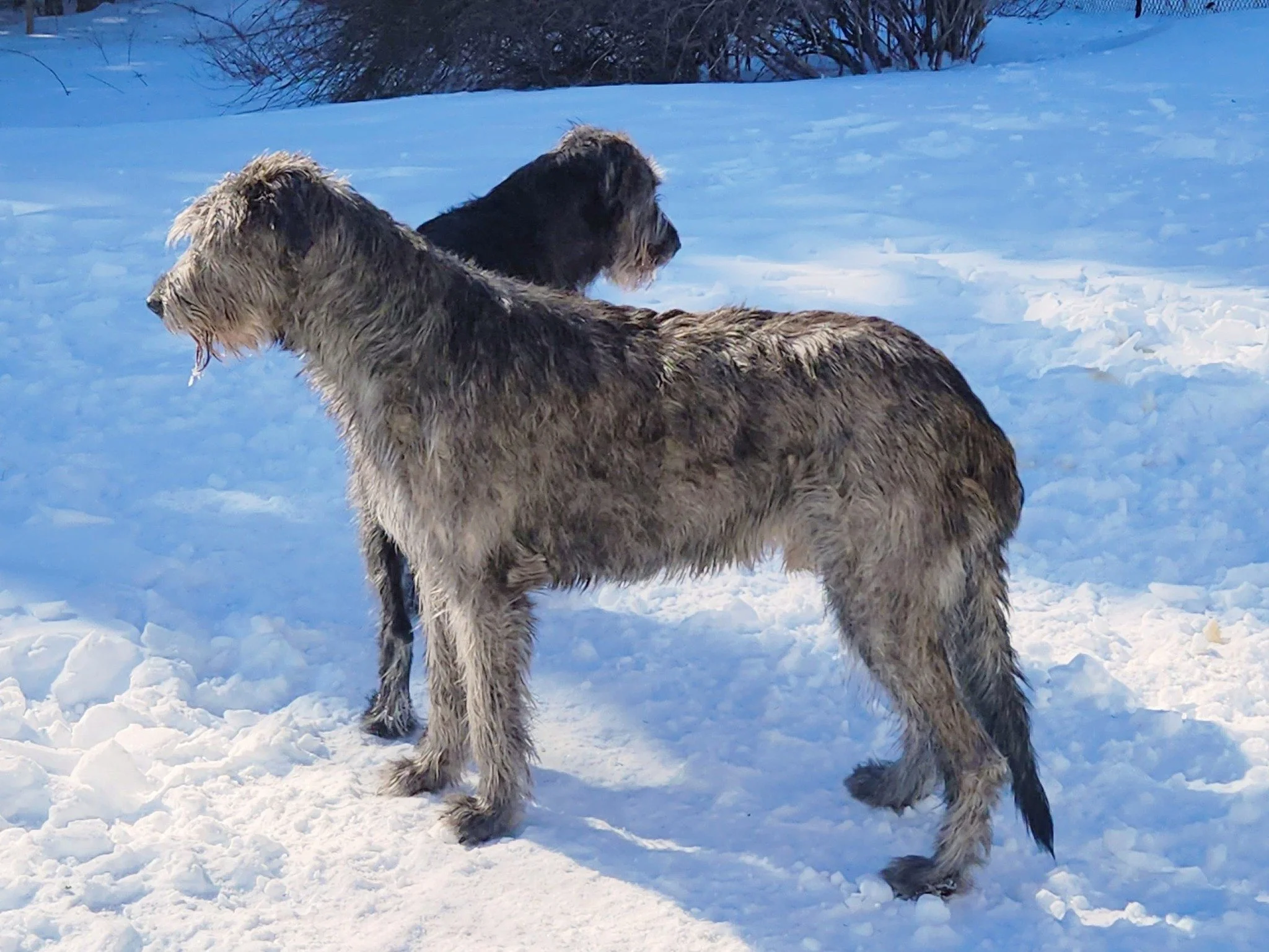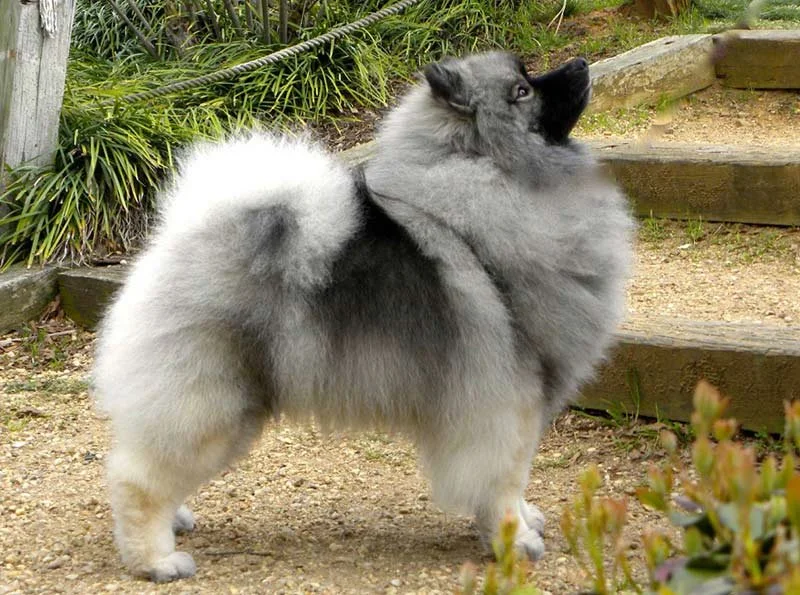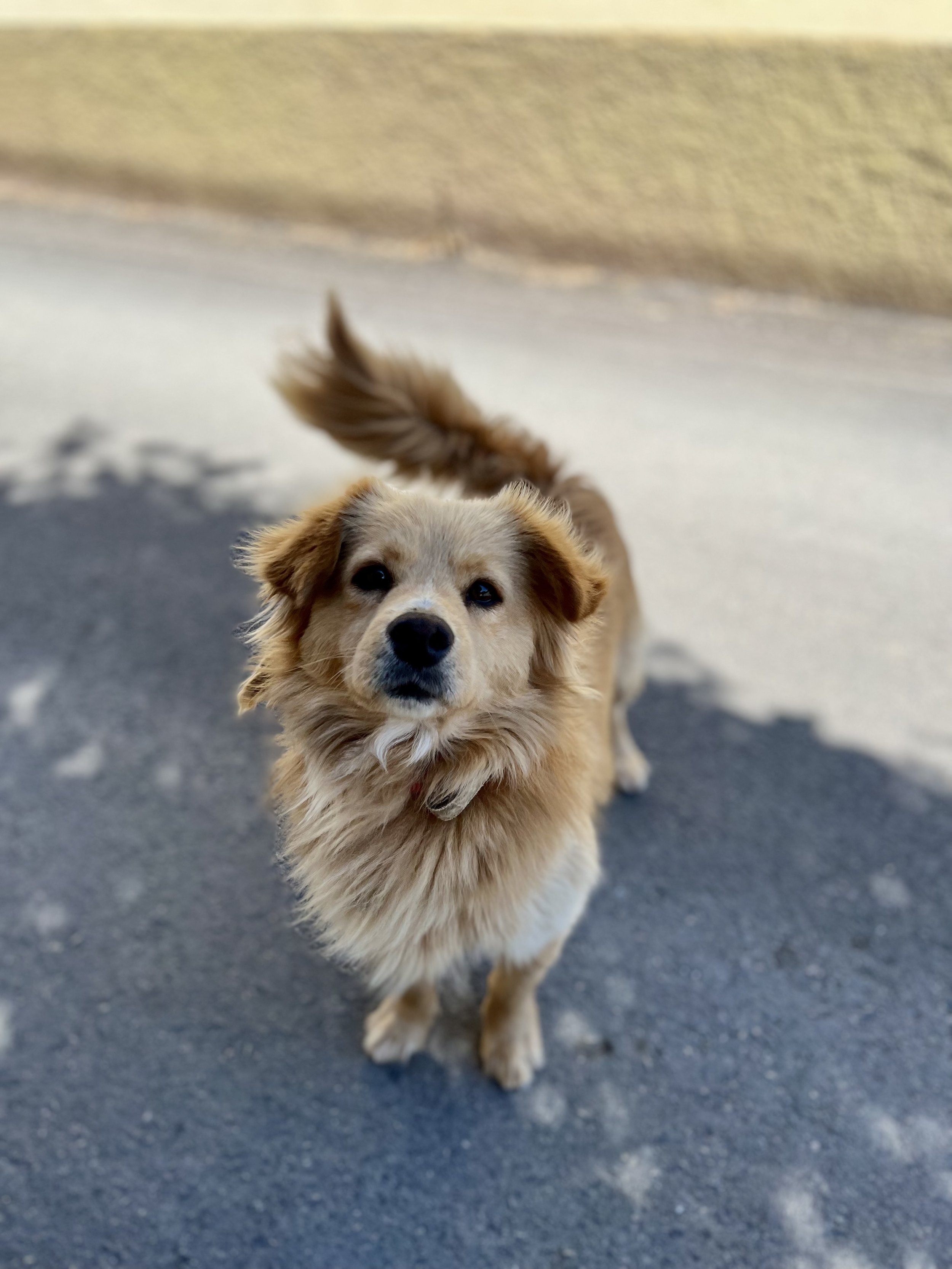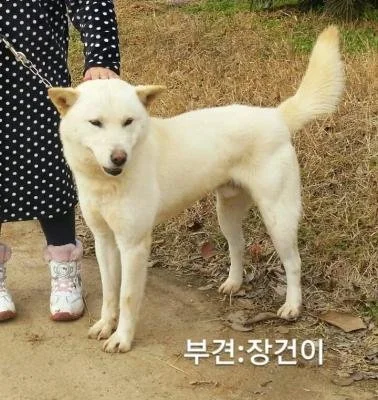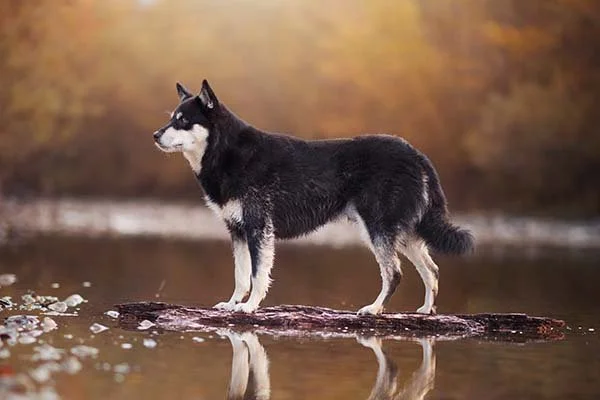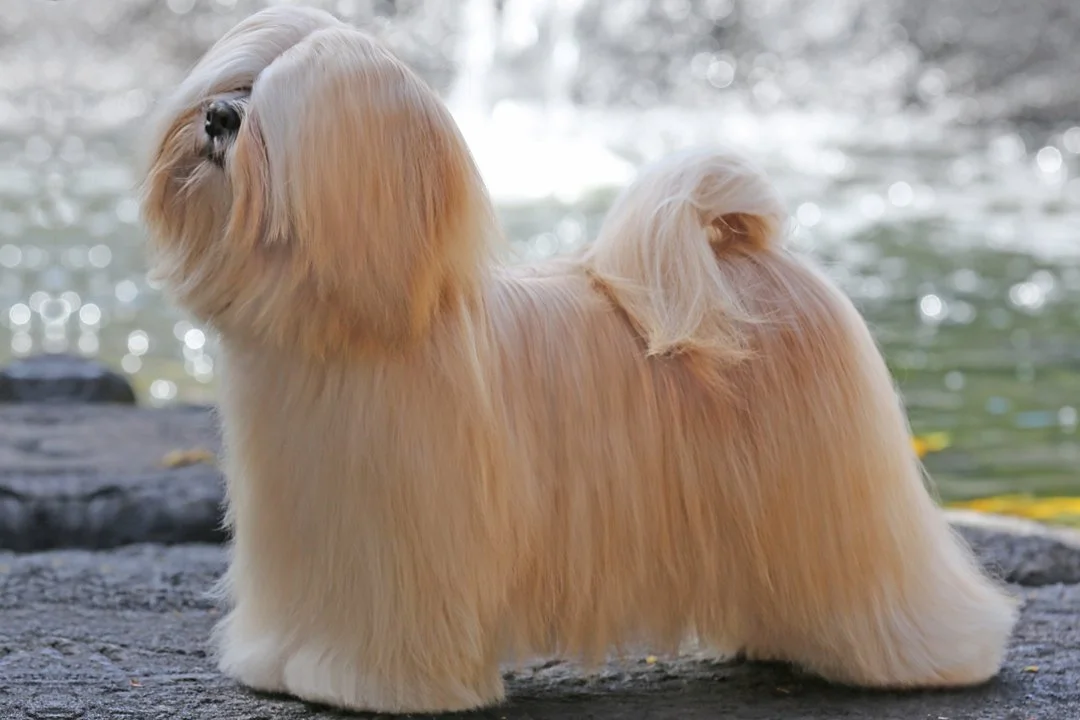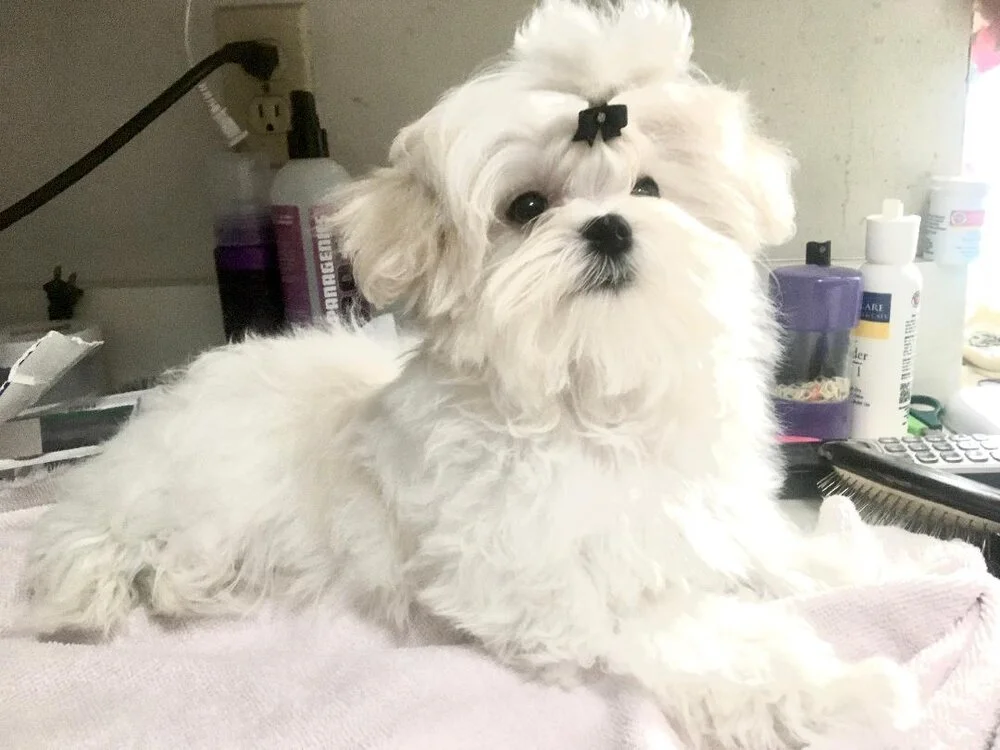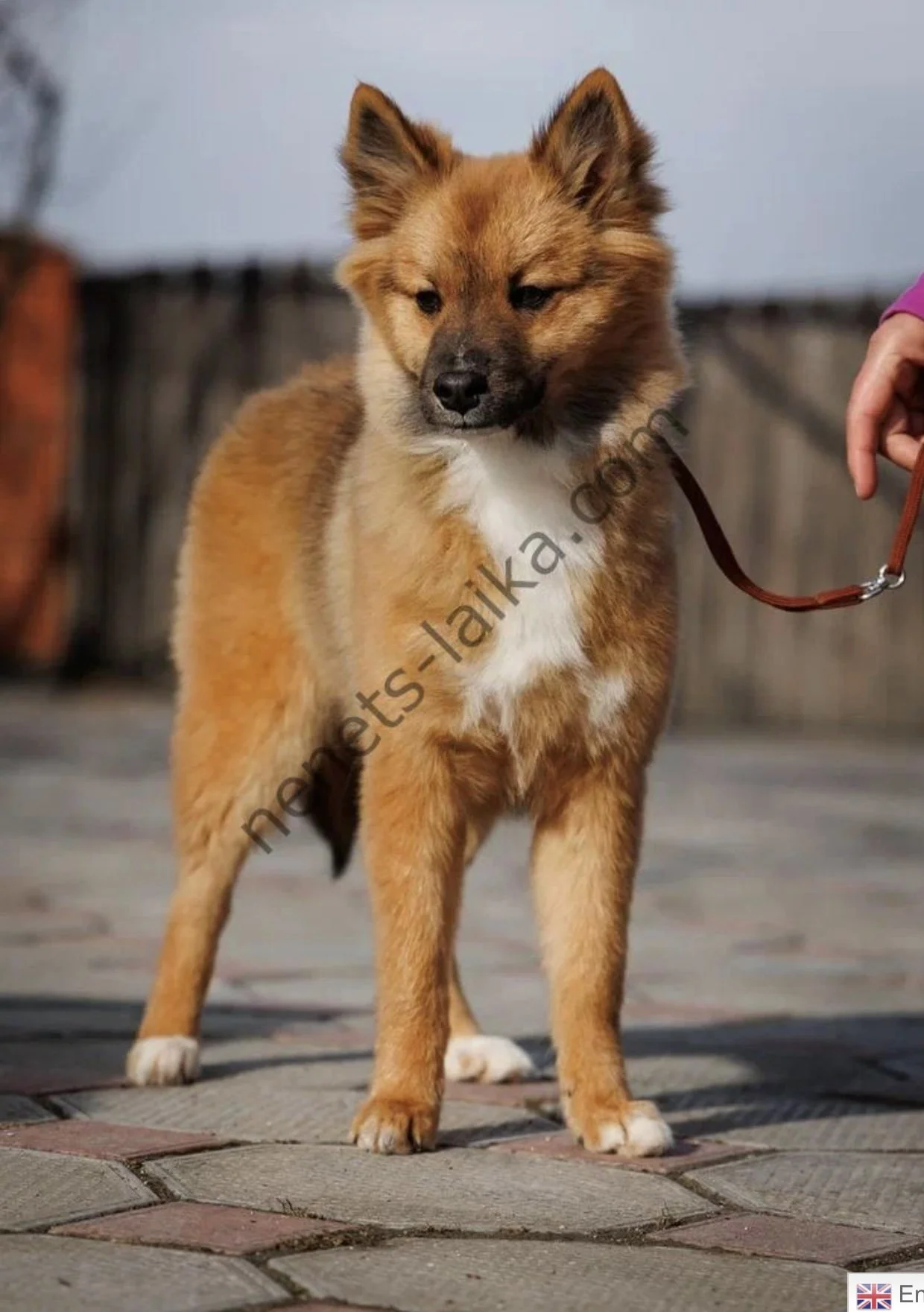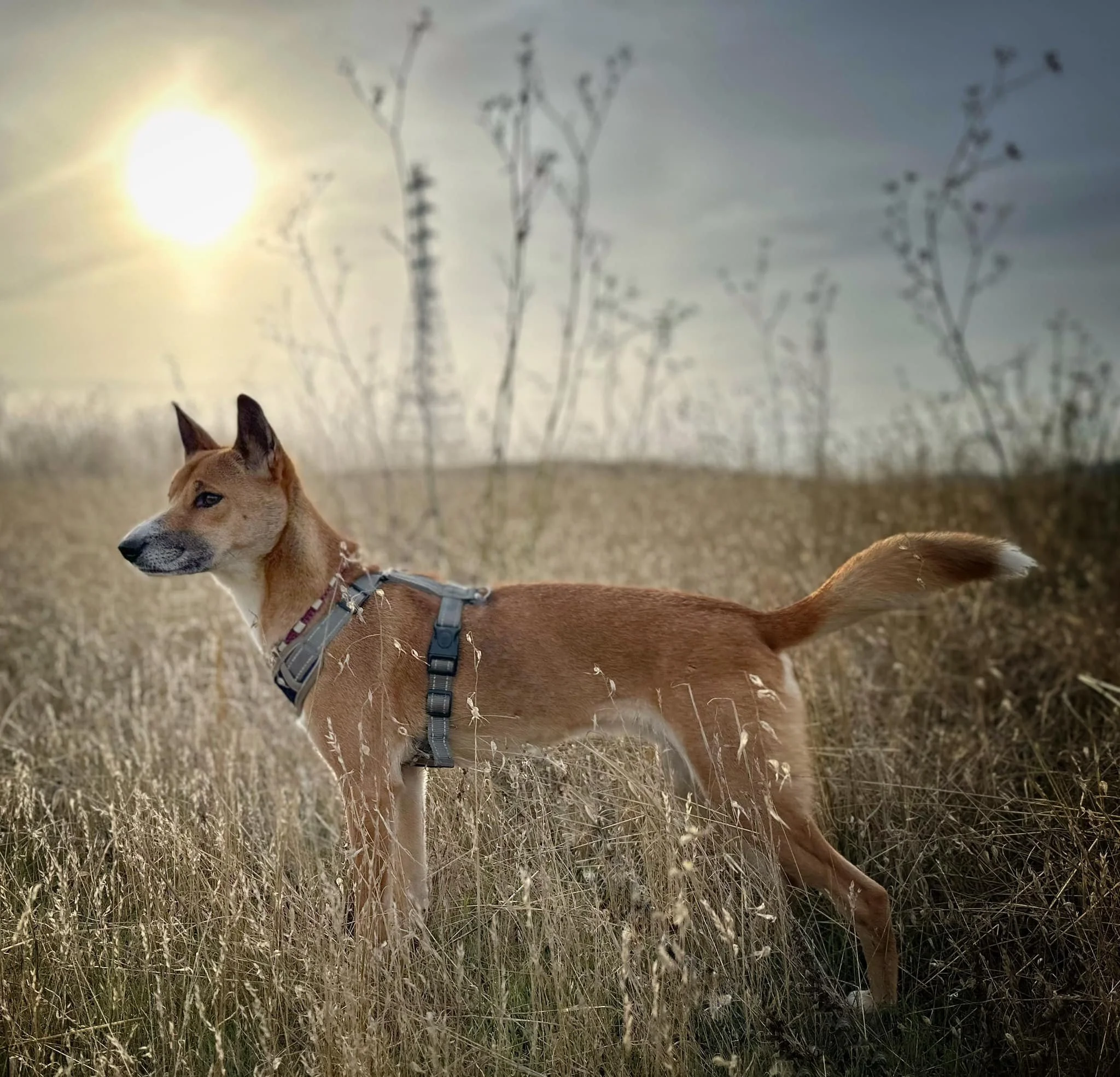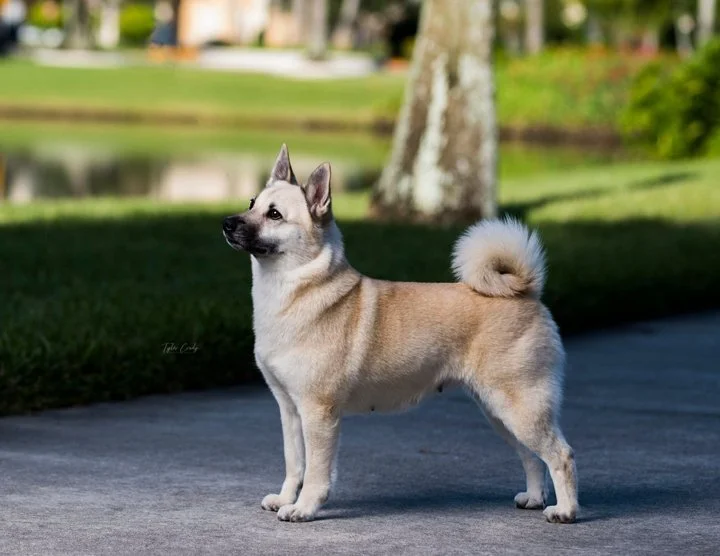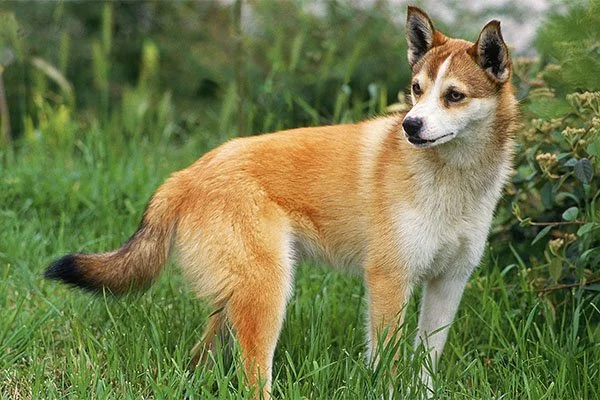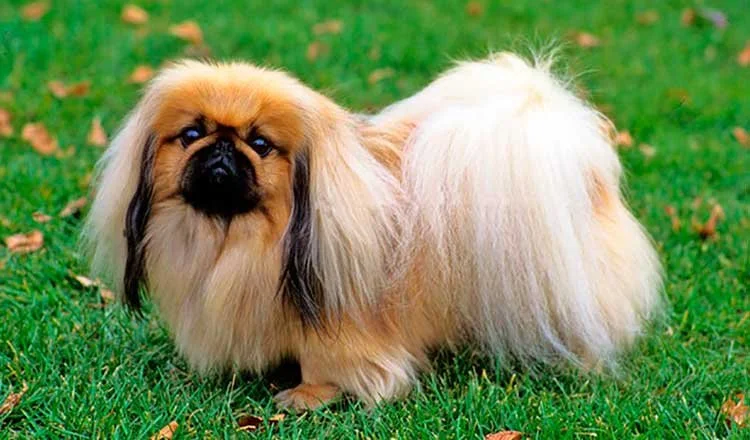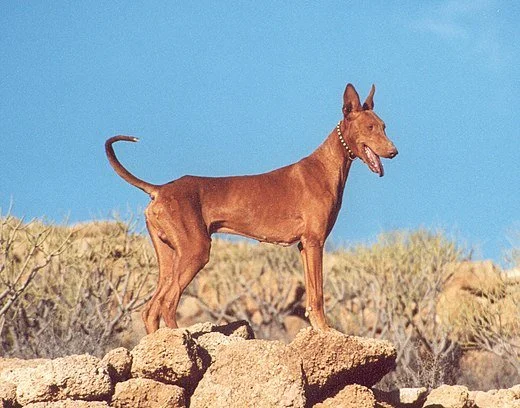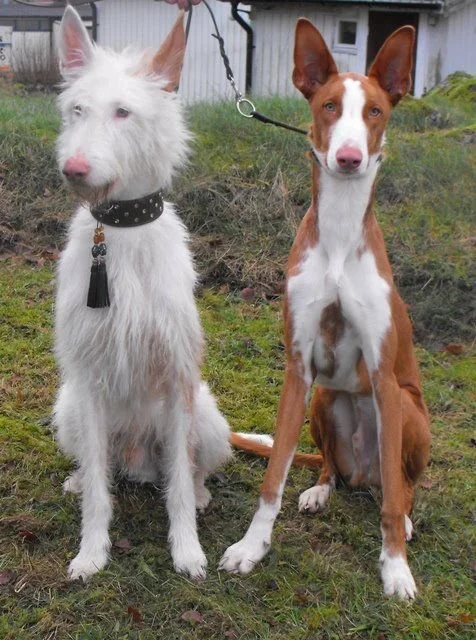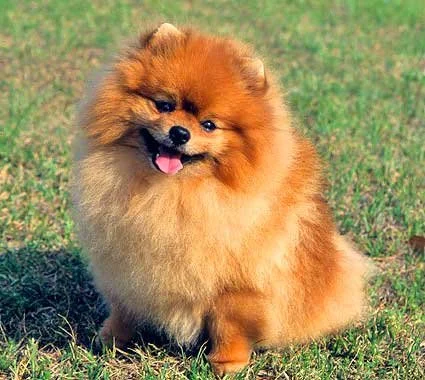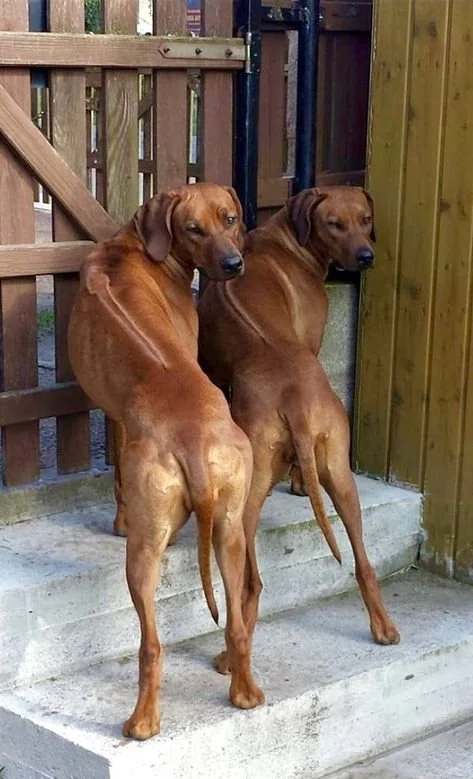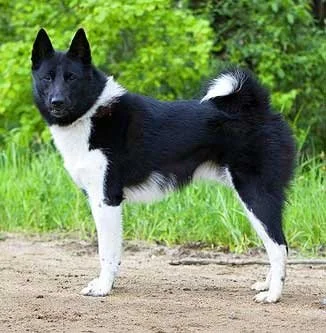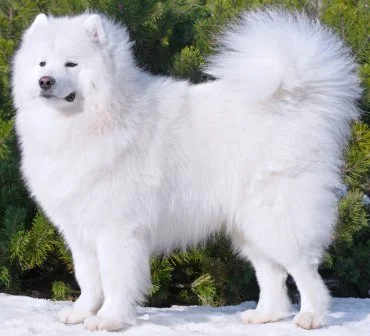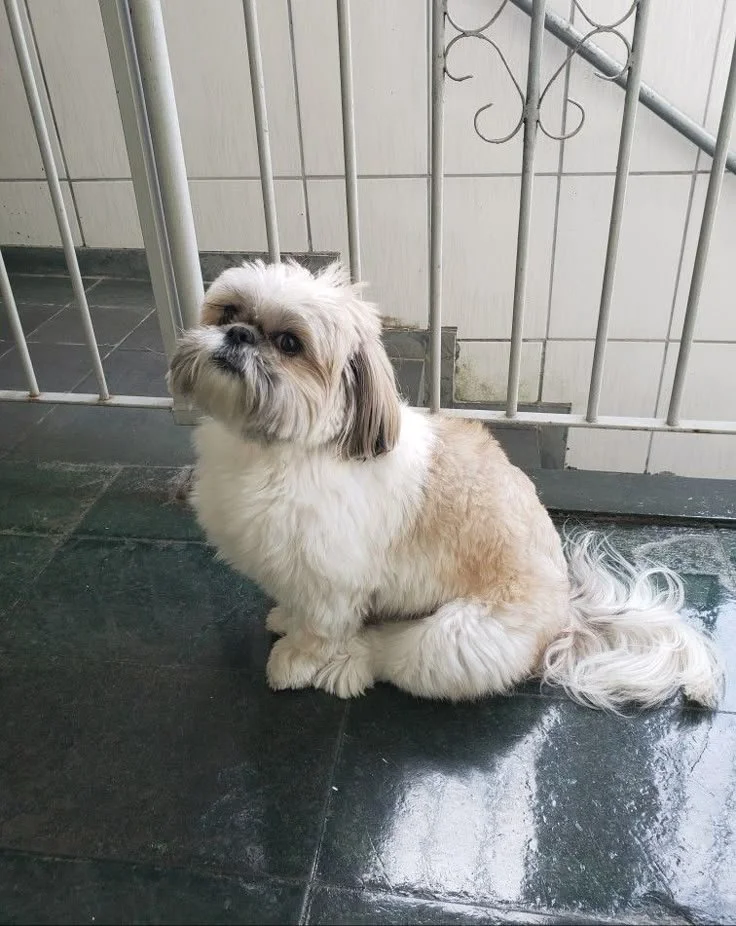Main Focus 1: Primitive Dogs
Primitive dogs are defined differently by many researchers, but I have most commonly seen them defined as ancient dogs with behaviors typical of wild canids like wolves or coyotes. Does this mean you have a dangerous animal in your home? No, primitives are no more dangerous than your typical pet dog.
Some primitive behaviors:
These are some behaviors that are seen in both primitive dogs and wild canids, coyotes in this case. Do your dogs do any of these? Chances are, they do at least one — nearly every breed or mix of domesticated dog have primitive behaviors. So what makes a breed actually “primitive”?
Here are some primitive and ancient breeds:
-
![]()
Afghan Hound
Afghan Hounds are extremely ancient coursing sighthounds from the cold mountains of Afghanistan. The flowing, long-haired variety we are used to are a Western kennel club creation, and those hounds still used in their homeland are called Tazi. Tazi have slightly shorter fur, which is typically limited to their legs, ears, neck, and tail, as they’re still active hunting hounds. Afghan Hounds may look majestic, but are very clownish, unserious dogs. Maintaining obedience training with them is, despite their intelligence, about as high-maintenance as their fur.
-
![]()
Akita Inu
Akitas are possibly the oldest of the Japanese dogs, historically hunters of large game like bears. Hachikō is the famous Akita who waited for his owner at the train station for 9 years after he died on the train on his way to work, and is now immortalized as a statue, reunited with his owner at Shibuya Station. Hachikō is not an outlier in the breed — this extreme loyalty is the main trait of the Akita.
Akitas are not to be messed with — many people consider them to be aggressive, but like Chow Chows further down this list, they are protectors of their families and they take their job seriously. They historically come from mountainside villages in Japan, where large wild predators live: predators like bears, wolves, and tigers.
-
![]()
Alaskan Malamute
Alaskan Malamutes are large sledge dogs, meaning unlike Siberian Huskies they were made to carry heavy loads for shorter distances. They belong traditionally to the Alaskan Indigenous peoples, or Iñupiat. They can be quite strong-willed, and do not do well with forceful methods of training. However, they are usually rather gentle dogs, and are typically not as vocal as huskies (though really, what breed is?).
-
![]()
Basenji
Basenji are small, African hunting dogs dating back to pre-historic Egyptian carvings. They are also called the “barkless” or “yodeling” dog, as their unusually shaped larynx cannot produce barking like other dogs. They are, even to primitive owners, considered one of the hardest breeds to train. They can have a mind of their own and seem to change their willingness to obey on a dime. They are, however, extremely close and loyal to their humans and will allow them to see their clownish, silly personalities.
-
![]()
Canaan Dog
More than 9,000 years old, Canaan Dogs have been used by Bedouin peoples as guard dogs for their herds and camps. They are now being used as protection and military dogs across the Middle East. They still take this guarding instinct seriously, so don’t expect to host frequent parties with a Canaan Dog in your home. They are large, strong, and focused… and also very, very close with their families.
-
![]()
Carolina Dog
Carolina Dogs are the only native “wild” dog in North America, similar to the Dingo of Australia. They have never been bred with human intervention, meaning they are far more wild-like than other “breeds”. They are also very energetic dogs with high prey drive, so an outlet for this energy is a must (unless you’d like your home dismantled).
Currently, the Carolina Dog Fanciers Club of America is looking to have this fascinating dog recognized, and they are now in the Foundation Stock Service in the AKC.
-
![]()
Chinese Crested
Despite the name, Chinese Crested most likely originate from the now extinct African Hairless dogs, imported into China in ancient times. They are excellent lapdogs and come in hairless (except for the legs, tail, and head/ears), and powderpuff (long and silky hair all over). Their personalities are as goofy as their appearance, and like the other toy dogs on this list, excel at agility and obedience. Since they are historically employed as lap-cushions, they also make excellent therapy dogs.
-
![]()
Chow Chow
Chows are extremely ancient Chinese guarding dogs, and they take their role very seriously. Many people in modern-times have categorized these dogs as aggressive, but they are simply made for very particular instances, and do not thrive in busy, small homes. They should not be kept in apartments or cities, and owners should be very well-versed in their body language — some trainers refer to the “Chow snap” as a seemingly sudden aggressive action. They can be predictable if communication is clear with owner and dog, meaning boundaries must be respected. If you gain the trust of a Chow Chow, however, they will love and protect you with every fiber of their being.
Note: I have used an old photo above because the modern Chow has been unfortunately bred to extremes (like many other breeds).
-
![]()
Cirneco dell’Etna
Argos Animal Training co-founder Elio Giglio dei Vignazzi is a Cirneco. The Cirneco is approximately 3,000 years old, traced back to identical skeletal remains found all over Sicily. They were imported by the Phoenicians (ancient sea-traders) from Egyptian sighthounds, and stayed on the island until today. They are also featured in many Ancient Greek reliefs and carvings all over the Greek colonies of Sicily.
Cirneci are strange little dogs (I say lovingly); they choose their friends according to their own criteria and like their boundaries clear and respected, but will absolutely not respect your personal space. Every female Cirneco I have met has crawled into my lap upon meeting them, and every male has rushed by me like the White Rabbit from Alice in Wonderland. I believe all of them are late for some important meeting.
-
![]()
Finnish Lapphund
Finnish Lapphunds are descendants of the Sami peoples’ reindeer herding-breeds (see Nenet‘s Herding Laika in this list). They are excellent all-purpose dogs, traditionally used for sled-pulling and herding but now popular as agility, mushing, and rally obedience dogs. As a herding breed, they can be very obedient when trained properly.
-
![]()
Inuit Dog
The Inuit Dog, also called Qimmiq by the Inuit and Canadian Esk*mo Dog by various kennel clubs (which I will not use, as the Inuit are both not Canadian and Esk*mo is a derogatory term), are large, sled-pulling dogs. They are historically very central to Inuit culture (both in Greenland and the Canadian north), as the nomadic nature of Inuit culture allowed them to hunt and move according to the time of year, and Qimmiq have excellent directional awareness even in the midst of snowstorms. Today, the Inuit Qimmiq are critically endangered, as the RCMP (Royal Canadian Mounted Police) attempted to wipe out their populations in the 1950s.
There is too much to say about these dogs and their history — read more here
-
![]()
Irish Wolfhound
Irish Wolfhounds are possibly the oldest identifiable dogs found on Ireland and all of the British Isles. A group of skeletons in Haughey’s Fort, County Armagh, Ireland, showed the largest dog skull found in neolithic Ireland and Britain. Irish Wolfhounds are also thought to be the inspiration for legendary hero CúChulainn’s namesake dog. Irish Wolfhounds are gentle giants with a typically friendly disposition. They are a giant breed with many breed-related health issues, so be sure to research each breeder heavily when considering taking one home.
-
![]()
Keeshond
Keeshonden (the plural of Keeshond, pronounced “kays-hond” and “kays-hond-in”) are historically the dogs of bargemen and sailors in Holland. They are identifiable by their “goggles”, lighter fur around their eyes, and extremely fluffy appearance. They are a breed of German Spitz, also called Wolfspitz, and are in the same family as Pomeranians. They are incredibly loving with their families, and can make excellent therapy dogs, but are energetic enough to require quite a bit of exercise. For an outdoorsy, active family, the Keeshond can make a great family dog.
-
![]()
Kokoni (Small Greek Domestic Dog)
The Kokoni is a still common breed of ancient Greek companion dog. They can be found in many, many pieces of ancient art, from gravestones to figurines to temple reliefs. They have been the companions of famous Greeks like Aristotle and Plato, and are still found in homes across the country. The Kokoni pictured here is a friend I made while on the Cycladic Island of Zakynthos (Zante), who not only took me on a walk around the island but waited for me outside while I went into a store. They are highly loyal, loving, trainable dogs with big personalities. If you’re looking to adopt one, though, it will definitely need to be shipped in from Greece!
My dream is to bring this breed to the US and hopefully continue to breed them to preserve their rich history.
-
![]()
Korean Jindo
The Jindo is an ancient hunting dog from Korea, traditionally for deer, boar, and small animals. They are extremely independent, highly intelligent, and cannot be trained using aversive methods. They are also prone to same-sex aggression, a common trait of primitives, are territorial, and tend to be dominant. That being said, they can also be big goofs and become very attached and connected to one person or family!
-
![]()
Lapponian Herder
The Lapponian Herder is, like the Nenet’s Herding Laika and Finnish Lapphund, a reindeer herding dog from Siberia. As working dogs, they have drive to run and herd snd are typically very obedient dogs, but as dogs bred to live within Sami families, they are also docile and calm. They are a herding breed (even if its reindeer they herd), so like other herders they are highly intelligent and should be trained accordingly — these dogs will train you if they wish.
-
![]()
Lhasa Apso
Lhasas are the lap-dogs and pest-control dogs of Tibetan monasteries. They are similar to Shih Tzus in appearance, but not necessarily personality; they are mischievous and clown-like, though also aloof and dignified, quite mistrustful of strangers. They can be quite relaxed, and if properly socialized as puppies, can make excellent emotional support or therapy dogs. However, they are more inclined to serve as therapeutic companions for their family.
-
![]()
Maltese
The Maltese is, as the name says, a small dog from the Mediterranean island of Malta. Historically, they are the lapdogs of royalty, and anyone who’s met one knows this well! It may surprise you to see these popular little yippers on this list of primitive breeds, but Maltese actually have many “quirky” behaviors that are difficult for the average owner to train with. They communicate strongly, a primitive trait, and as such are typically considered “bossy” or “dramatic”. If a Maltese snaps at you, it’s possible they simply want space — don’t take it personal, and give them space. Trust allows these dogs to show their full, happy personalities.
-
![]()
Nenet’s Herding Laika
The Nenet’s Herding Laika is a very ancient reindeer herding breed of the Indigenous people of Siberia, the Nenet. They are also the ancestors of Samoyeds and Finnish Lapphunds. They are friendly, all-purpose dogs that are now popularly used in tracking and scentwork in their native country of Russia. In the US, they are still in the process of becoming recognized by major kennel clubs.
-
![]()
New Guinea Singing Dog
If you’ve met a New Guinea Singing Dog, congrats! Not many people have. As the name says, NGSDs come from Papua New Guinea and are of course known for their very impressive ability to harmonize their song. They are highly, highly intelligent, very mischievous, and not entirely domesticated, much like the Carolina Dog and Dingo. As they are so extremely rare, those who own these wild dogs are very dedicated to their preservation and education. Visit the New Guinea Singing Dog Club of America for more info from owners and experts.
-
![]()
Norwegian Buhund
Associated with the Vikings, the Buhund has been historically used as an all-purpose farm dog and cold-weather herder, working sheep and cattle while keeping guard. Today, this versatility has transferred to a wide range of sports and work — competing in agility, dock diving, flyball, competitive obedience, barn hunt, tracking, and bringing comfort to others as therapy dogs.
Their name, “Buhund”, breaks down to “farm-dog”; “bu” meaning “homestead” or “farm”. Where these family-dogs stayed to drive the cattle and work the farm, their cousins the Swedish Vallhund were the ones to go off with viking raiders! So if you want to feel like a viking but are also a homebody, this may be the dog for you!
-
![]()
Norwegian Lundehund
You may know the Norwegian Lundehund by their famous six-toed paws, their ability to seal their ears, and bend their head nearly 90 degrees and front legs horizontal to their back. They also very nearly went extinct after World War II, and since their gene pool has been shrunk so dramatically they are also known as the most inbred of dog breeds. The Norwegian Kennel Club has an ongoing project of 15+ years to widen this gene pool by outcrossing Lundehunden with similar breeds like Norbottenspets and Pembroke Welsh Corgi.
-
![]()
Pekingese
Pekingese were historically bred to specifically be ornamental accessories for the higher classes in Imperial China. They were, in a very funny way, the Ancient Chinese version of Mace or pepper spray — the smallest Pekes were called “sleeves”, as they were carried in the large sleeves of their owners, and were known to be particularly feisty… and were deployed when their owners felt threatened. They seem to have calmed down a bit in modern times, but that tight bond between owner and Peke remains just as strong.
-
![]()
Pharaoh Hound
First and foremost, Pharaoh Hounds are actually not from Egypt! They are from the island of Malta (like the Maltese earlier on this list!) and are called Kelb tal-Fenek in their homeland (which means “rabbit dog”). They hunt rabbit and other small to medium game found on the island. Their ancestry most likely comes from the famous hunting dogs, Tesem, of Ancient Egypt, like the other Mediterranean rabbit hunting hounds. In appearance, they are nearly identical to Cirneci, just larger!
-
![]()
Podenco (Andaluz, Canario, Ibizan)
Podencos refers to a group of skinny, prick-eared hunting hounds from Spanish islands and on the mainland countries of Spain and Portugal. They are, also, sometimes called the “Invisible Dogs“ or “The Forgotten”, as they are the some of the most abused dogs in Europe. Spanish law excludes them from animal welfare laws as hunting dogs, which are considered tools. They live in often horrific situations, and most hunters shoot them when the season is over. See Hope For Podencos for more.
Extremely versatile and adaptable, pods are able to live in many living situations — as long as they’re with their human. They are clownish, deceivingly clever, and very sensitive to changes in their human’s behaviors and emotions.
-
![]()
Pomeranian
Pomeranians I have included on this list as the smallest (and most recognizable) of the German Spitz; another can be found on this list, the Keeshond or Wolfspitz. The German Spitz subcategory is considered the be the oldest group of dogs found in Europe, though there have been some notable changes for the Pom when compared to their ancient, sled-pulling ancestors. Since the 1700s, they have been bred smaller and smaller, from around 30–40 lbs to the now standard 10–15. They are extroverted, jolly little dogs, typically great trick and agility dogs, though in spirit maintain that “big-dog-energy”, are territorial by nature, and change their willingness to obey seemingly on a whim.
Some do not consider this a primitive breed; I think in recent years Poms have been bred to be more and more ‘modern‘, and have moved further from their ancient behaviors.
-
![]()
Rhodesian Ridgeback
Less ancient than the other breeds on this list, the Rhodesian Ridgeback is made up of primitive and landrace breeds and originates in South Africa. It traditionally was used to guard the land and livestock of its owners and to flush small birds and hunt large game. One of the principal breeds making up this ridgeback, besides ancient scenthounds and sighthounds, is the Hottentot Dog, a landrace breed native to Africa and a excellent hunter. RRs have very high prey drive, dignified appearance, aloof with strangers, and — typically, in my experience — have a goofy, undignified side.
-
![]()
Russian Laika
In this category I’ve included the East Siberian Laika, West Siberian Laika, and Russo-European Laika (pictured above). These are intense, big-game hunters native to the arctic region. Also used as multi-purpose hunting dogs, they are used in whatever way their owner needs — they can withstand extreme conditions, can survive in the wild on their own, and capable of taking down bears and other large-game. These are serious dogs, and should not be owned by first-timers or those not well-versed in primitive behavior and hunting-dog drive. That being said, they should have a friendly disposition and are never to be aggressive with other dogs!
While some of the laika breeds are recognized in different kennel clubs worldwide, those who still use these dogs as hunting companions in Russia do not typically enter them into conformation shows, focusing instead on the functional aspects of the dog.
-
![]()
Saluki
Saluki are most commonly known to be one of the oldest breeds on Earth, and based on ancient carvings and paintings found throughout the Middle-East, potentially up to 9,000 years ago! They are likely the ancestor of all modern sighthounds. Traditionally, they have been kept by the nomadic Bedouin people that live throughout the Middle-East, which is a very unique position for a dog: they are typically held on the same high-esteem as Arabian Horses and falcons, and despite dogs being seen culturally as “unclean”, only saluki are allowed into the tents and living quarters of people.
They are aloof with strangers, and loyal to their owners. Like greyhounds and other knobby-boned sighthounds, they like to sprawl in impossible positions and are not known to cuddle. They will, however, follow you from room to room and sit beside you, a constant presence by your side.
They are also almost always a flight-risk because of their extreme hunting drive — they will break retractable leashes and run straight through electric fences!
-
![]()
Samoyed
Known as the “smiling” dog, the Samoyed is a very ancient herding and sled-pulling breed kept by the Sami of the Scandinavian north. They are related to the Nenet’s Herding Laika and Finnish Lapphunds, and are able to “smile” because, as they are from a frigid climate, their lips curve up to lessen the chances of drool freezing to their jowls.
Samoyeds are goofy, unserious dogs — but their large size and hefty muscle is not to be taken lightly! If these dogs want something, take care to hold on.
-
![]()
Shiba Inu
The Shiba Inu, meaning “brushwood” dog due to their coloring, is the national dog of Japan and quickly becoming a popular dog in America. They are the face of the “Doge” meme (as well as the cryptocurrency named after it). Shibas are exceedingly clever and nimble, so don’t be fooled by that cute squishy face — they can and will use those smarts to their own gain. If trained with consistency, understanding, and unending patience, they can be extremely loyal, loving, and connected partners. Beware: if you have not heard the Shiba scream, do not consider getting this dog. If you’re not expecting it, they will make your ears bleed.
You will never leave an interaction with a Shiba thinking, “wow, what a typical and boring dog!”
-
![]()
Shih Tzu
Shih Tzus are possibly the most popular breed on this list, besides the Siberian Husky. Known as sassy goofballs to the small-dog world, Shih Tzus are from Ancient China, where they were kept by Chinese royalty and noblemen. They have a long, soft coat that is typically kept short (though if you watch dog shows, they are noticeable for their very long coats!).
They tend to be very stubborn, as is the way of a primitive dog, but if they trust you whole-heartedly, they will consider listening to you. Respect their boundaries and be aware of their small-size, and they will make a wonderful, entertaining companion!
-
![MBISS Snoebear's Lady Fighting Irish at TreeLine]()
Siberian Husky
The Siberian Husky is one of the most popular breeds in North America, and understandably! They are entertainers at heart, sassy, strong-willed, and LOUD! Their characteristic howling is possibly what makes them appear so wolf-like, behaviorally, there is much more wolfiness! They are typically wary of strangers, flee a the signs of danger, and communicate very strongly with other dogs.
Huskies are some of my personal favorite breeds. They are full of personality, and you will never walk away after meeting a husky thinking, “man, that was a normal dog!”
They are also very hard to train. Hard-headed and independent, huskies are certain they know best and that what they want to do takes precedent over what you ask of them. In this way, they are very cat-like.
-
![]()
Swedish Vallhund
If you know of the Swedish Vallhund, you likely know them as the “viking dog”! These stubby-legged herding dogs have been found in many, many ancient graves belonging to vikings all the way back to 900 CE, and have been known to accompany them on their longships to sail to new lands. It is likely that the Pembroke and Welsh Corgi breeds are descended from these confident little dogs. Wolfy in the face and shepherd-like in behavior, Vallhunds are strong-willed and high-energy herders!
-
![]()
Thai Bangkaew
Many people have not heard of the Thai Bangkaew — I have included it on this list because it is likely the only remaining breed that is descnded not from wolves, but from a now-extinct wild dog akin to a golden jackal or dhole! As the name suggests, they come from the Bankaew village within the Bang Rakam District of Phitsanulok province, Thailand. They are very serious watchdogs, and not typically friendly with strangers — though should never be aggressive. They are also highly attached to their families, loyal to a fault, and because of this are easy to train.
The Thai Bangkaew is currently only recognized by the FCI and Kennel Association of Thailand, and are seeking official recognition in the AKC’s Foundation Stock Service.
-
![]()
Tibetan Mastiff
The Tibetan Mastiff is a very serious, powerful dog. Those who’ve ever had to deal with one know of their stubbornness — you can not make a Tibetan Mastiff do something they do not wish to do. Training them requires endless patience, mutual understanding and communication, trust, and the knowledge that some skills you can teach one dog, you cannot teach this one. They are, of course, native to Tibet, the most common type called the Do-Khyi, and are characteristic of their lion-like mane, large-boned and strong stature, and their intense dedication to protecting their land. These dogs require a very particular type of owner, and do not like high-traffic households with other pets and children.
-
![]()
Tibetan Terrier
This profusely-coated loyal watchdog comes from Buddhist monasteries in the Tibetan mountains. Historically, they have sat outside the homes of monks to keep watch for visitors to their remote monasteries, and are excellent ratters. They are, however, known to bark quite a bit, and are very reserved with strangers. They also live very long, with few known health conditions, and are generally hypoallergenic.
-
![A little group of fruit bats :)]()
Xoloitzquintli (Mexican Hairless)
If you’ve seen the Pixar film Coco, you know some characteristics of the Xolo. First fun fact — Coco’s Dante always has his tongue hanging out because genetically, hairless dogs have quite a bit of missing teeth, so their tongue may hang out! There are three sizes of Xolos: toy, intermediate or miniature, and standard. The standard Xolos are large, imposing dogs with a serious expression and uncaring attitude towards strangers, but a very, very close relationship with their owner or family. The toy and intermediate sizes are more characteristic of other smaller watchdogs, suspicious of strangers and with a deep love of their owners’ laps. Mexican Indigenous peoples have numerous stories on the healing power of Xolos, and would often place the smaller ones in the beds of their sick. Despite being named “Mexican Hairless Dogs”, they come in a coated variety, with about a one-in-five chance of coated pups in each litter.
